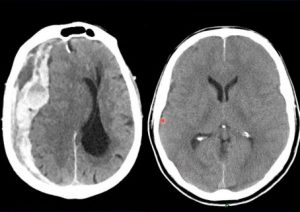Medical Student Education Guide
Medical students are often exposed to radiology during mandatory or elective clerkships during their third and fourth years of medical school. Basic knowledge of scan types, their utilization, and common conditions can be useful. This applies to medical students interested in careers in radiology as well as all other medical students.
General overview
There are a few general concepts in neuroradiology which are applicable to all areas of radiology, so it’s a reasonable place to start. This playlist has a lecture discussing some of the key concepts for when you are starting in radiology, which applies whether you are a medical student or a resident.
Start with this lecture to learn some general concepts about what it is like to start as a radiology resident.
Search Patterns
Part of success in radiology is learning how to successfully look through a study for abnormalities, something radiologists refer to as a search pattern. This is similar to how medical students learn to do an H&P in the same order each time. It is the most basic step in training and one that radiologists repeatedly fall back on during their career.
Each study in radiology, whether a CT or an MRI, usually has one or more sets of images (“series” or “sequences”). These are ways in which the imaging data is displayed to help identify certain aspects of the image or pathology better. You need to develop a system for looking at each of these, and knowing what to look for in each one.
Specific search patterns
Each of the linked videos in the side panel will give you some information about a search pattern for that study type.
The full playlist of search pattern videos is found here.
Links to commonly used search patterns:
Common Conditions
Radiology is a big field, but a few topics are more relevant when you are starting because they are more common and often more important not to miss. Check out the videos below to learn more about those areas.
Hemorrhage
One of the first things you need to know about is the appearance of intracranial hemorrhage, a life-threatening condition evaluated by a neuroradiologist almost every day. Intracranial hemorrhage includes extraaxial hemorrhages (subdural hematoma and epidural hematoma), subarachnoid hemorrhage, and parenchymal hemorrhages. Check out this lecture to learn more about the appearance of hemorrhage and how it evolves over time.
Brain Tumors
Brain tumors are another common condition encountered in neuroradiology. The most common brain tumors include metastases, primary parenchymal tumors (like gliomas), and meningiomas. Other neoplasms like lymphoma can also affect the brain. It’s good for anyone spending time in radiology to have a good overview of what different brain tumors look like.
There is a dedicated lecture about these brain tumors:
To learn more, check out the page specifically devoted to the topic of brain tumors:
Spine
Spine is a tough area for most medical students because the anatomy is somewhat tough and it can be difficult to see what the radiologist is seeing when looking at the disc, spinal canal, and neural foramina. Moreover, there is a lot of subjectivity when evaluating these regions.
To learn more, check out the dedicated lecture about spine imaging.
Books
A few books about neuroradiology can be particularly useful to medical students, although many of them are written at a level above medical students. These are just a few of the examples out there which might be fun and useful. Since you are only on the rotation for a few weeks, think about asking one of the residents or faculty if they have any books you might be able to borrow during your rotation. I usually have several of these books unused in my office at any given time and am happy to lend them out.
This is a list of a couple of books that I recommend for medical students. For a more complete list of books, see the full list here.
Neuroradiology Companion – Carlos Zamora, Mauricio Castillo
This is one of the first books on neuroradiology that I ever read (although it was an earlier edition). At the beginning, it has a nice section overviewing some general techniques in neuroradiology, such as how the scans are performed and what type of imaging you might perform for a given condition. Then, it goes into a case-based review of some of the most common conditions divided by body system. It shows you some key images along with short but relevant bullet points. This is a nice and somewhat short book which could be read over the course of a 2-4 week neuroradiology rotation.
Neuroradiology Requisites – Rohini Nadgir, David Yousem
I’ll start by saying this book is more extensive than most medical students need. However, it is thorough and has sections on most of the major neuroradiology topics, including brain, spine, and head/neck. There is a lot of detail there, and it’s longer than you would read on a typical rotation. There are some really useful sections for medical students, and it’s organized by pathology. I think it’s a reasonable place to start, especially if you have the chance to borrow the book from a resident or faculty for a few weeks. Don’t get too bogged down in the text, and it’s reasonable on a first pass just to go through and look at the images while reading the captions.
*disclaimer: links on this page are Amazon affiliate links. I get a small referral fee which helps fund this site if you purchase through these links.
All posts for medical students
Of course, this is only the beginning. Check out the remainder of the site to see what other content is here. To see all posts tagged for medical students, click here:
Thanks for stopping in!




